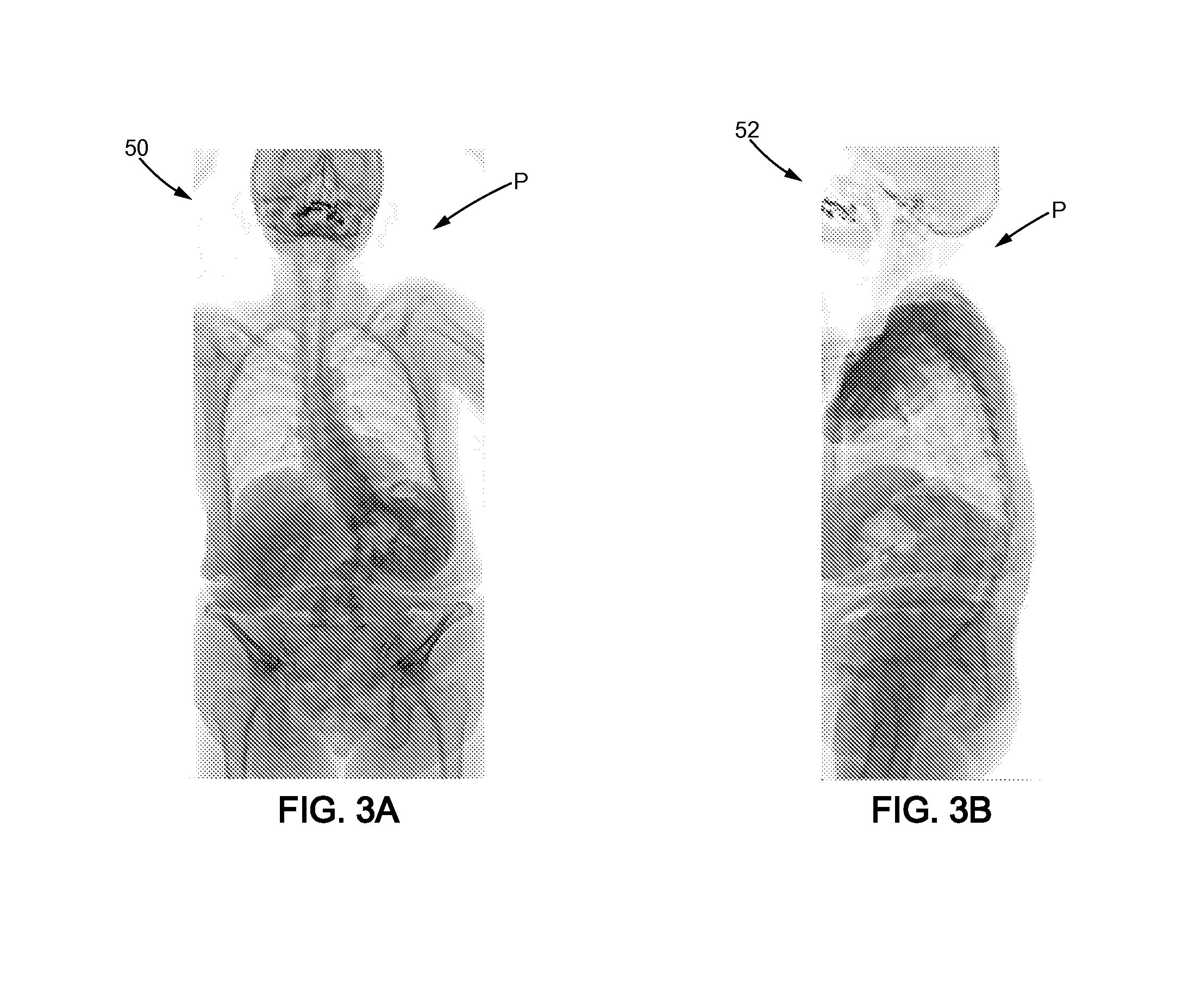Method for designing a patient specific orthopaedic device
a technology for orthopaedic devices and patients, applied in the field of patient specific orthopaedic devices, can solve problems such as potential misalignment, and achieve the effects of accurate, reliable and inexpensiv
- Summary
- Abstract
- Description
- Claims
- Application Information
AI Technical Summary
Benefits of technology
Problems solved by technology
Method used
Image
Examples
first embodiment
[0069]According to the invention, the method is a method for designing a spinal implant for a patient having scoliosis.
[0070]As illustrated on FIGS. 3A and 3B, during step a), two radiographic images 50 (frontal view), 52 (lateral view) of the spine 54 and of the pelvis 56 of patient P are taken by the apparatus 1.
[0071]Step b) and part of step c) are then performed automatically by the processor 17 to reconstruct the three-dimensional shape of the spine 54 and pelvis 56 of patient P (FIGS. 4A and 4B).
[0072]The reconstruction method used may be one of those described in document EP 1 168 249 B1. Naturally, other types of reconstruction methods may optionally be used in the context of the present invention. Such methods rely on placing in correspondence two representations of a given anatomical part on two calibrated X-ray radiographs.
[0073]Next, the practitioner manually identifies the part of the spine 54 on which the spinal implant 58 will be fixed, for example by clicking with th...
second embodiment
[0089]According to the invention, the method is a method for designing a hip implant for a patient needing hip replacement, for example due to arthritis pain or severe physical joint damage.
[0090]During step a), two radiographic images (frontal view and lateral view) of the femur of patient P are taken by the apparatus 1.
[0091]Step b) and part of step c) are then performed automatically by the processor 17 to reconstruct the three-dimensional shape of the upper portion of the femur 60 of patient P (FIG. 6).
[0092]The reconstruction method used may be the one described in document EP 1 168 249 B1. Naturally, other types of reconstruction methods may optionally be used in the context of the present invention.
[0093]At step c), three three-dimensional geometrical features of patient P are automatically determined by the processor 17.
[0094]These features are the femoral offset, the femoral neck angle and the internal surface of the femoral shaft 64.
[0095]In order to design a reliable and ...
PUM
 Login to View More
Login to View More Abstract
Description
Claims
Application Information
 Login to View More
Login to View More - R&D
- Intellectual Property
- Life Sciences
- Materials
- Tech Scout
- Unparalleled Data Quality
- Higher Quality Content
- 60% Fewer Hallucinations
Browse by: Latest US Patents, China's latest patents, Technical Efficacy Thesaurus, Application Domain, Technology Topic, Popular Technical Reports.
© 2025 PatSnap. All rights reserved.Legal|Privacy policy|Modern Slavery Act Transparency Statement|Sitemap|About US| Contact US: help@patsnap.com



